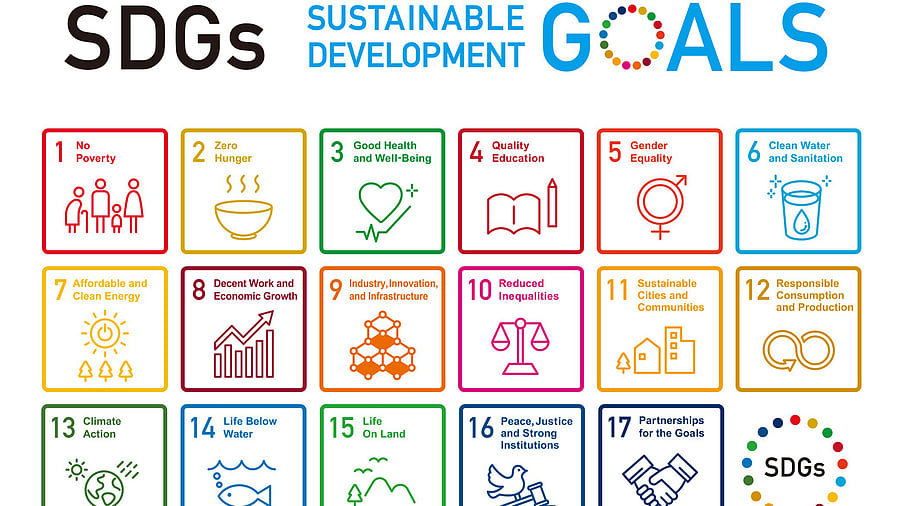
Sustainable Development Goals.
Credit: iStock Photo
Last month, India for the first time crossed a historic threshold by entering the top 100 nations in the United Nations’ Sustainable Development Goals (SDG) Index. It secured the 99th position among 167 countries, with a composite score of 67 out of 100. This upward shift from 121st in 2022 to 109th in 2024 is a broader transformation of state-led governance and public investment in sustainable development.
While at the national level, the leap is notable, much of India’s SDG momentum is shaped by the steady efforts of its states. According to NITI Aayog's 2023-2024 SDG India Index, the number of 'Front Runner' states/UTs increased from 22 to 32, with notable progress in poverty eradication and climate action; but Goal 5 (gender equality) lags below 50 points.
So, which states are driving this success, and what are they doing differently?
SDG frontrunners
At the top is Kerala (79 points), followed by Tamil Nadu, Goa, and Himachal Pradesh. These states consistently lead in health, education, and welfare indicators.
In contrast, Bihar (57) and Jharkhand (62) are the lowest-ranked states in 2023-2024. Other laggards include several North-Eastern states like Nagaland, Meghalaya, and Arunachal Pradesh.
The front-runner states are achieving significant SDG gains through calibrated fiscal strategies tailored to local realities. Frontrunner states invest in people, services, and governance, prioritising strong institutions, human development, and effective social policies. For instance, Kerala excels with 93.9% literacy, 74.9 years of life expectancy, and being open-defecation-free. It tops India's Human Development Index with the lowest multidimensional poverty index (0.002).
Tamil Nadu and Goa excel in literacy and health, while Uttarakhand and Himachal Pradesh achieve above-average nutrition and sanitation standards through active local bodies.
Laggard states like Bihar and Jharkhand face challenges with low literacy, health metrics, and large poor populations, highlighting the importance of institutional quality and capable governance.
Central policy interventions, along with expansions in health insurance and schools, have lifted state SDG scores, especially in states that effectively supplemented them with state funding. For example, in the last decade, India built over 11 crore rural toilets (Swachh Bharat), provided LPG connections to 10 crore households (Ujjwala) and delivered housing to about 4 crore poor families (PMAY).
The SDG puzzle
SDG financing relies on a multi-stakeholder framework, with domestic public finance as the dominant pillar, complemented by private investment, official development assistance, and innovative instruments, along with flagship schemes (e.g., PMAY, SBM, MGNREGS) to support SDG targets. While precise disaggregated data is limited, estimates suggest that public expenditure aligned with SDGs constitutes around 6-7% of India’s GDP, with states contributing nearly 60-65% of this SDG-related spending, especially in sectors like health, education, and rural development.
Disconnect between public spending and SDG scores
Paradoxically, a higher share of public spending doesn't guarantee a higher SDG score. Many poorly-performing states spend more as a percentage of GSDP, yet lag due to ineffective fiscal strategy. According to NITI’s 2025 Fiscal Health Index, the healthier states like Odisha, Madhya Pradesh, Chhattisgarh, Goa, Karnataka, and Uttar Pradesh allocate about 27% of their development budgets to capital outlays, building infrastructure.
States with weaker SDG outcomes, like Punjab, Andhra Pradesh, and West Bengal (and even Kerala), face high deficits and debt, which limit development spending. They allocate only about 10% of their budget to capital expenditure, prioritising salaries and subsidies, resulting in rising Debt-to-GSDP ratios and reduced funds for essential services like schools and hospitals.
The net effect is a strong negative correlation between spending share and SDG rank. Aspirational states like Bihar, Jharkhand, and Uttar Pradesh see diluted impact from high spending due to governance gaps, while richer states like Kerala achieve more with targeted spending.
Ways ahead
India's SDG progress is uneven, with leading states excelling through good governance and targeted spending, while laggard states see limited impact despite high spending due to institutional and fiscal challenges.
As India aims higher growth and development trajectory, bridging the divide and reducing the interstate disparities in SDG scores are important. States lagging in SDGs must learn from the front-runners, invest in social overhead capital, empower women, and engage communities in planning.
Despite the upward trend, India continues to lag on nine SDGs, notably in areas like climate action, marine ecosystem protection, and reducing inequality. Structural challenges such as poor centre-state co-ordination, inconsistent budgetary provisions, and limited scalability persist. Moreover, the lack of disaggregated data across states and districts hampers fine-tuned policymaking.
The road ahead demands targeted financing and it calls for political vision, institutional co-ordination, and a relentless commitment to inclusive development.
(Aswathy Rachel Varughese is Assistant Professor, Gulati Institute of Finance and Taxation, Thiruvananthapuram. Navyatheertha S G is a student, Integrated MA Economics, University of Hyderabad.)
Disclaimer: The views expressed above are the authors' own. They do not necessarily reflect the views of DH.